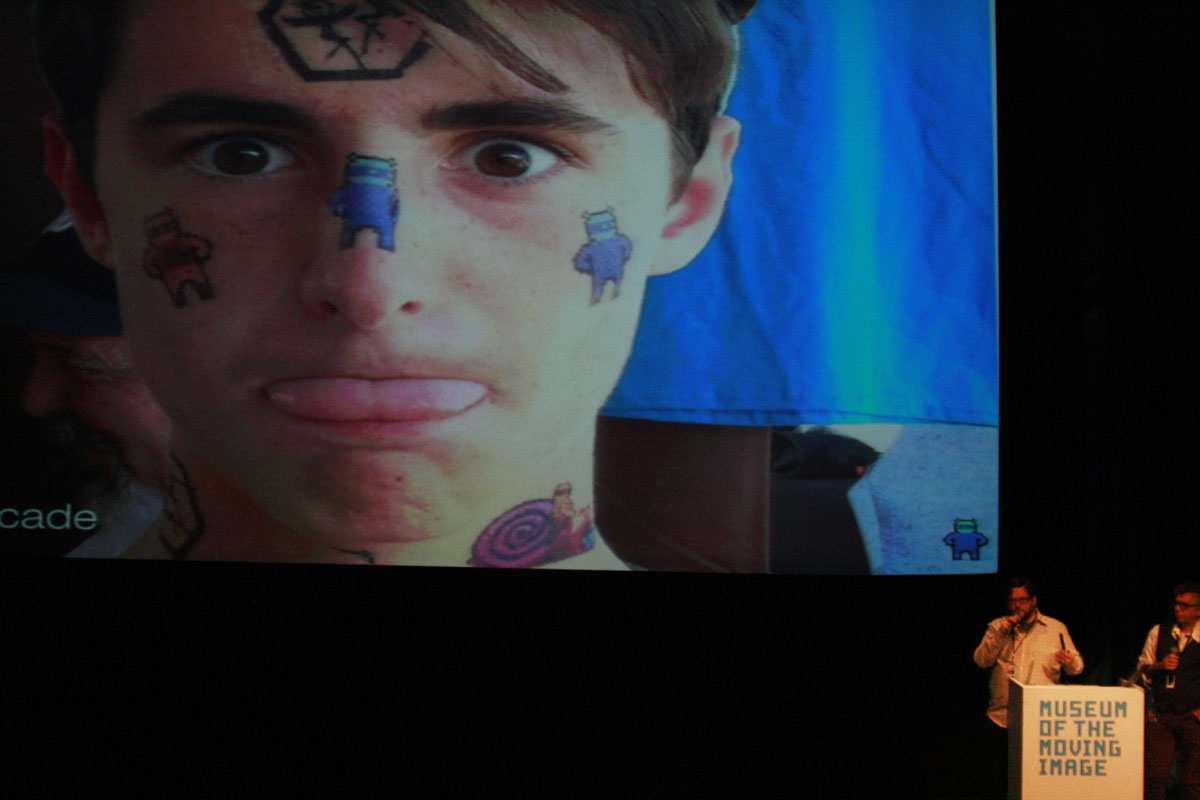The behemoth, connected, 10-player game cabinet Killer Queen Arcade, which we first told you about in December, is still evolving.
It’s part of the update we heard from the game’s developers Joshua DeBonis and Nikita Mikros this weekend at Indiecade East 2014.
While the makers are veterans of videogames (and live action games as well), they said they have never done anything with the arcade business before. They shared much of what they have learned with the alternative gaming community gathered over this past weekend at the museum.

Disclosure: this reporter played a lot of Killer Queen Arcade this weekend at the show. He played minor parts in economic and military victories, and even rode the snail into the basket for a win by snail. It was great.
Here’s some takeaways we picked up from the creators:
- The creators thought about every single tiny detail of this game. The tabletop of the cabinet is divided into five parts for the five players, but the four outer controls aren’t actually in the center of their sections. They are each carefully off center and even slightly angled, because they found that distributed players more comfortably.
- Building a physical cabinet was a new experience for the team. DeBonis said, “To software guys like us, the whole measure twice cut once approach to something like this was totally foreign to the iterative approach of software development.”
- The game lends itself well to tournament play and projected games that facilitate spectators. Future builds may have the tournament function (with rankings and brackets, etc) built in, with an easy interface for projecting the game so others can watch.
- Tournament experiences are enhanced when you bring people in to cast the game, do the play by play and color commentary, like in traditional sports.
- The rule of thumb for selling an arcade game is that you can sell it for the price that an arcade owner can reasonably expect to recoup in a year.
- The game is still evolving. The team is coming out to the Museum of the Moving Image about every other week to make updates while it gets played in the Indie Essentials show.
- They have a prototype arcade game up at Q-Zar in Concord, California, to determine what it can earn in a year at different price points. They’ve been playing around with price points, finding it earns more playing for $1.00 than it does playing for $2.50.
- Arcade games have to compete with Skeeball and other ticket dispensing games, so the team is considering putting a ticket dispenser on the game, even though that’s something that no one has ever done on an arcade game. It’s not clear why.
The team has some fear that the whole notion of the game might be a bit too foreign for the young players who dominate arcades. That said, Technically Brooklyn saw lots of young players who were really excited playing the game at the show this weekend. The game is getting upwards of 200 plays per weekend at the Museum these days, but it probably went way past that at Indiecade East.







